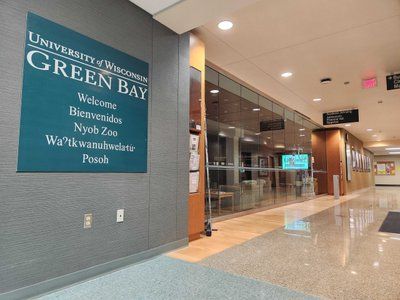By Tom Still
MADISON – Rural America was thrown a Depression lifeline in the 1930s when the federal government rallied to spread electric power across farm country. Not long after came affordable rural telephone service, even if it was delivered through a black “party line” phone hanging on the kitchen wall.
The modern equivalent is broadband, generally described as high-speed connections to the internet. After lagging in broadband capacity for years, rural Wisconsin may finally be poised to catch up.
The breakthrough is largely a result of the second Connect America Fund, which tasked the Federal Communications Commission to work directly with major providers who promised to deliver high-quality service in underserved – mostly rural – areas.
For the latest CAF program to work, however, communities and governments must collaborate on the technically gritty details of deployment, staging and cost.
That is happening in Vilas County, a northern Wisconsin vacation hub that aims to boost its economy, its schools and its quality of life through a stubbornly conceived plan to deliver high-quality broadband over the next 18 months.
The Vilas County story combines persistent leadership, local buy-in and enough guidance from state government to provide some necessary glue.
That story also begins with the CAF2 money. Only California among the 50 states will receive more federal dollars than Wisconsin between now and 2020 to enhance broadband downloads and uploads in places that are isolated and otherwise underserved. About $570 million will be allotted over six years to three providers – CenturyLink, Frontier and AT&T, in order of competitive grant size – to augment private investments in broadband by those same companies.
About 40 percent of the money must be spent by the end of 2017 and 20 percent per year must be put to work in 2018, 2019 and 2020. The goal is to efficiently bring broadband at a market price to about 230,000 Wisconsin homes that don’t have solid access today.
The federal rules lay down minimum download and upload speeds – essentially, how fast a computer receives and sends data – as well as price points for service that must include reasonable data “caps,” or limits on monthly use that can force people to ration how much they use the internet.
Led by Carl Ruedebusch, a long-time Wisconsin businessman and chairman of the Vilas County Economic Development Corp., a group of educators, state technology experts and legislators such as Sen. Tom Tiffany, R-Hazelhurst, and Rep. Rob Swearingen, R-Rhinelander, met with Frontier’s tech team in May to map a plan to provide broadband to about 5,000 new locations.
The staged plan will weigh a number of factors, including how to reach homes most likely to have school-aged children or other students. That demographic data came from three Vilas County school districts and Nicolet Technical College. At the May meeting, Vilas County educators agreed connected schools and laptops don’t do as much good if a child can’t work at home.
In Vilas County and elsewhere, a likely result of the CAF2 buildout in Wisconsin will be more “fixed wireless” broadband. That’s an alternative to much more expensive optical fiber systems.
The costs of installing optical fiber over large geographic areas has given pause even to companies such as Google, which is rethinking several of its U.S. broadband initiatives or trials. Those costs are more daunting in rural communities, where fixed wireless systems offer tower-to-building connections that meet standards set by the Federal Communications Commission as a part of CAF2. For the most part, fixed wireless can use existing towers.
Whatever the delivery mode, broadband is essential to the economic and cultural health of rural Wisconsin.
Adequate broadband connections can help stem the loss of rural population and jobs. It can enhance eCommerce for businesses large and small; bolster public safety; improve health through telemedicine; boost tourism by encouraging visitors to stay longer; entice Millennials to stay put and connected; and improve education for kids who otherwise lose their internet connections once they leave the school grounds.
State officials say the Vilas County template should help other communities work with providers to speed deployment of the CAF2 dollars. With accurate data from local sources, providers can better engineer broadband rollouts – and with more local “champions” such as Ruedebusch, rural Wisconsin can better leverage CAF2 to its advantage.





